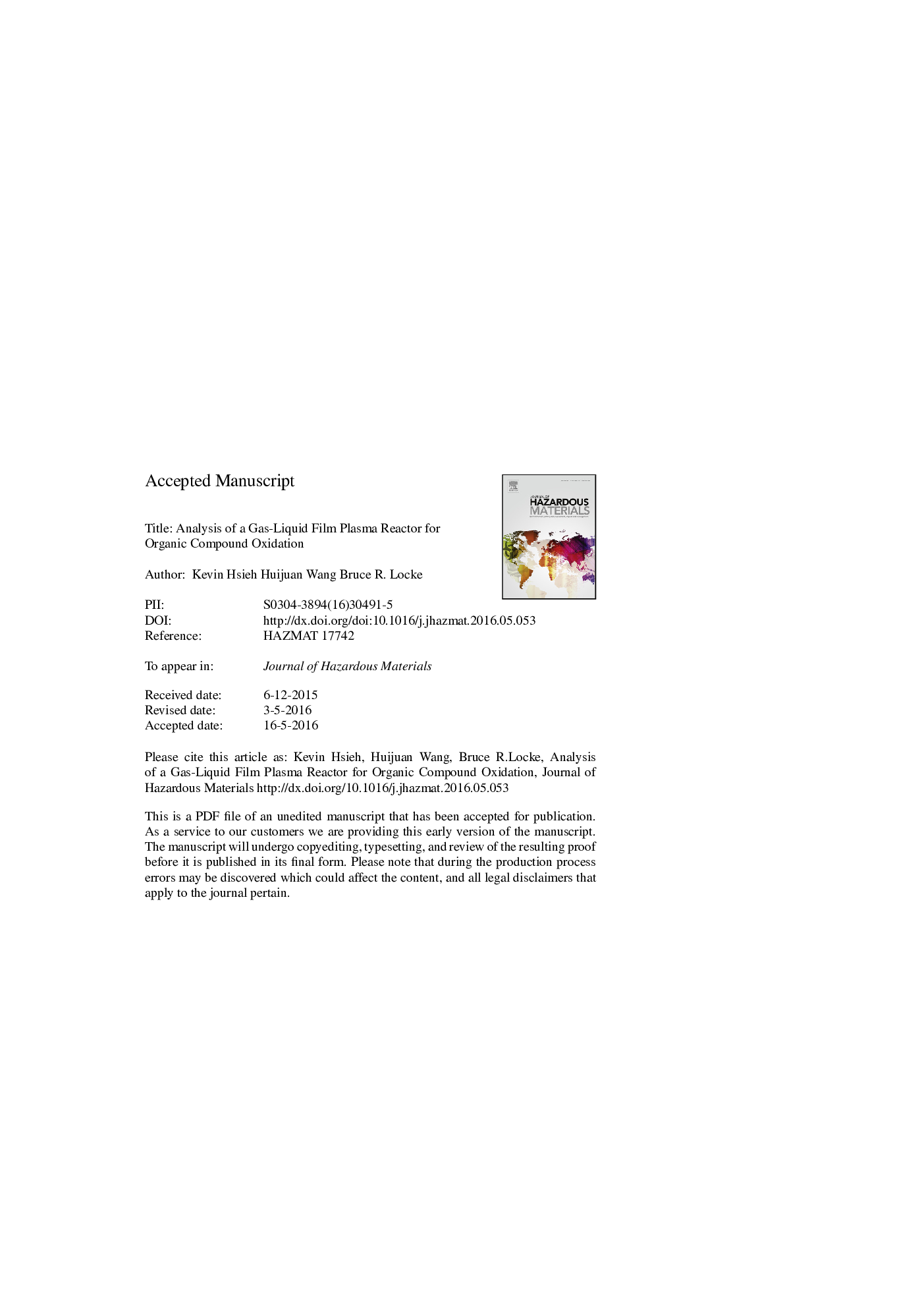| کد مقاله | کد نشریه | سال انتشار | مقاله انگلیسی | نسخه تمام متن |
|---|---|---|---|---|
| 6970051 | 1453043 | 2016 | 35 صفحه PDF | دانلود رایگان |
عنوان انگلیسی مقاله ISI
Analysis of a gas-liquid film plasma reactor for organic compound oxidation
ترجمه فارسی عنوان
تجزیه و تحلیل یک رآکتور پلاسما گاز مایع برای اکسیداسیون ترکیبات آلی
دانلود مقاله + سفارش ترجمه
دانلود مقاله ISI انگلیسی
رایگان برای ایرانیان
کلمات کلیدی
ترجمه چکیده
یک پلاسمای تخلیه الکتریکی پالس شکل گرفته در یک راکتور لوله ای با گاز حامل گاز آرگون و یک فیلم مایع آب با استفاده از متیلن آبی به عنوان فاز مایع فاز هیدروکسیل رادیکال و اندازه گیری همزمان از تشکیل پراکسید هیدروژن تجزیه و تحلیل شد. اثرات جریان مایع، هدایت مایع، غلظت رنگ و افزودن یون آهن در رنگ آمیزی و تخریب رنگ تعیین شد. سرعت جریان مایع بالاتر و غلظت رنگ باعث کاهش درصد رنگ زدایی و ایجاد پراکسید هیدروژن به علت اثرات هدایت مایع اولیه و زمان اقامت کمتر در راکتور می شود. بالاترین میزان تولید رنگ رنگی رنگ موجود در این مطالعات، 5/2 گرم در کیلو وات ساعت در هنگام استفاده از جریان مایع بالاتر و افزودن کاتالیزور بود. ماهیت غیر همگن ترشح پلاسما، تولید پراکسید هیدروژن را در رابطۀ پلاسمای مایع در برابر اکسیداسیون شیمیایی آلی در فاز مایع فیزیکی و واکنش های پس از پلاسما با کاتالیزور فنتون منجر به استفاده کامل از پلاسما - پراکسید هیدروژن تشکیل شده است.
موضوعات مرتبط
مهندسی و علوم پایه
مهندسی شیمی
بهداشت و امنیت شیمی
چکیده انگلیسی
A pulsed electrical discharge plasma formed in a tubular reactor with flowing argon carrier gas and a liquid water film was analyzed using methylene blue as a liquid phase hydroxyl radical scavenger and simultaneous measurements of hydrogen peroxide formation. The effects of liquid flow rate, liquid conductivity, concentration of dye, and the addition of ferrous ion on dye decoloration and degradation were determined. Higher liquid flow rates and concentrations of dye resulted in less decoloration percentages and hydrogen peroxide formation due to initial liquid conductivity effects and lower residence times in the reactor. The highest decoloration energy yield of dye found in these studies was 5.2Â g/kWh when using the higher liquid flow rate and adding the catalyst. The non-homogeneous nature of the plasma discharge favors the production of hydrogen peroxide in the plasma-liquid interface over the chemical oxidation of the organic in the bulk liquid phase and post-plasma reactions with the Fenton catalyst lead to complete utilization of the plasma-formed hydrogen peroxide.
ناشر
Database: Elsevier - ScienceDirect (ساینس دایرکت)
Journal: Journal of Hazardous Materials - Volume 317, 5 November 2016, Pages 188-197
Journal: Journal of Hazardous Materials - Volume 317, 5 November 2016, Pages 188-197
نویسندگان
Kevin Hsieh, Huijuan Wang, Bruce R. Locke,
